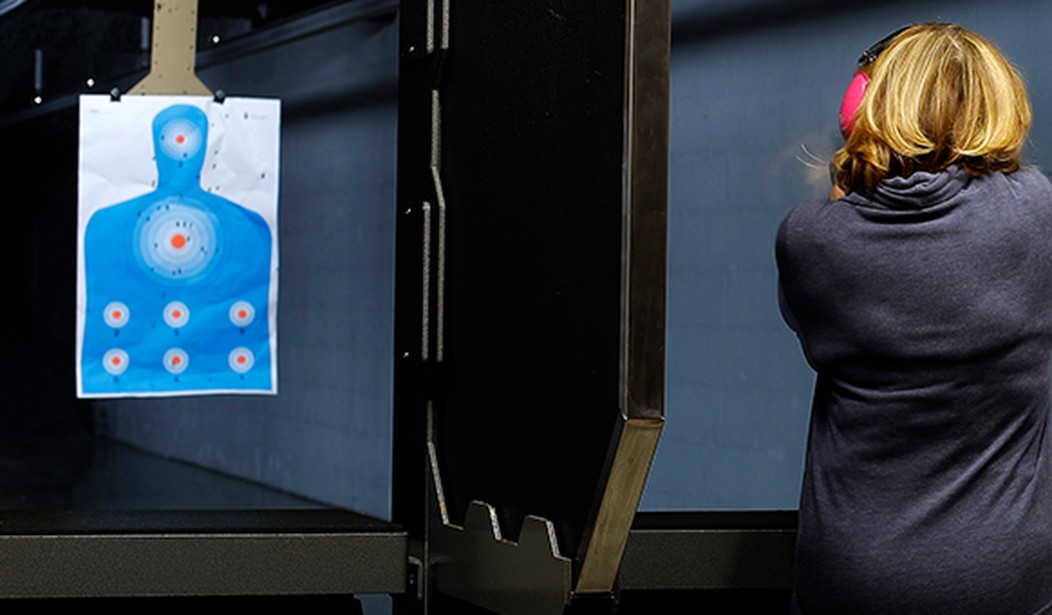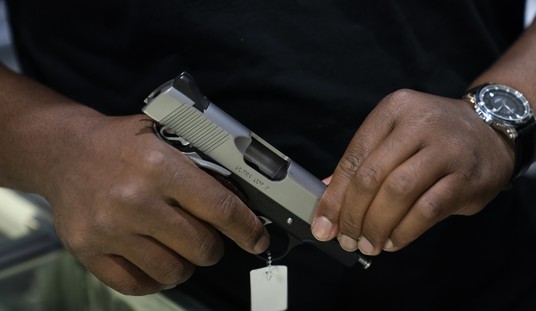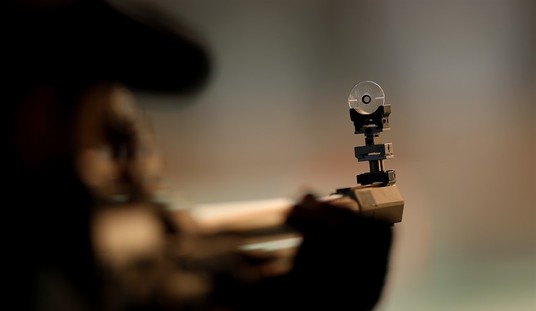Recently a colleague of mine brought up a concept that was actually engrained into me very early on as a student, never-the-less an instructor. When working with brand new students to firearms, it’s important to follow all the safety rules. It does not matter which set of rules a syllabus comports to; the NRA “Always” rules, or the “Cooper Rules”. There are a number of things that go on when dealing with new students, and as instructors and or as students, we need to be aware of these things. This concept is universal for those seeking and giving training. Take this situation from either perspective:
An instructor is standing in front of a group of twenty new students of the gun. There are a few “experienced” people in the class. The instructor has two co-instructors to help out. The class ranges in age, sex, race, etc. It’s a solid mixed bag representing America. Some of the students are nervous and very anxious about taking the class, and actually handling/firing firearms. Some of the students are diligently paying attention, excited about what they’re about to learn. One guy that learned everything he had to ever know about guns from his uncle is in the class only because he’s required to take it for a non-resident concealed carry permit he’s applying for. A middle-aged woman is astutely paying attention, taking notes through the class. There is a former police officer sitting in the back who is taking the class because he needs to show proof of training in order to join the local gun club. There’s a butcher, baker, and candlestick maker. You get the picture. A good cross-section.
The instructor just finished a section on never pointing the firearm at anything that you’re not willing to destroy. He also discussed some of the other safety rules such as keeping the finger off the trigger until ready to shoot and or on target…that we’re to treat every gun as if it’s loaded. The class is not sanctioned by any actual organization, it’s an “in house” class, designed by the instructor, even though the instructor is certified by a number of organizations.
We’ll call our instructor Tom, to make things easier. Tom picks up a plastic replica firearm to illustrate his next point. In the process, Tom sweeps (points at) all the students with the muzzle of the training aid. There are several instances throughout the class that Tom points the training aid at the students or co-instructors while making points. The class continues on and there’s a live fire session. Some of the students excel and others do not. Some of the students have safety violations and some are extra vigilant. Some of the students were open to criticism and some were not. If you’ve ever been in any class of 20 people with all of them being new to something, or close to new to something, you have a pretty good idea of what the scene might look like. Everyone “passed”, they got their certificates, a class photo was taken, and everyone high fived each other.
Tom told the students that with that certificate they can apply for a number of non-resident concealed carry permits and that they’re all good to go. He directed them towards his merchandise table after his statement.
What’s wrong with this scenario? Not given many other details, there are a few things that we could pick apart. Given the context of all this, we’re going to focus on that plastic replica training aid.
Ever hear someone say “practice makes perfect”? Or, the nuevo version, “perfect practice makes perfect”? Okay, that concept is the concept of repetition. Without going too far into the weeds, let’s pull some science into the equation:
But why exactly does repetition help us learn and improve? It all comes down to the way cells in our brain communicate, and the physical changes that they undergo when they communicate repeatedly as we practice the same action over and over. Our brains are made up of neurons, which are specialized cells that talk with each other using electrical signals called action potentials.
…
The major parts of the neuron are the dendrites, structures that receive signals from other cells, the cell body, which interprets those signals, and the axon, a long, wire-like structure where the signals travel along to the next neuron. The axon is shielded by a white, fatty substance called myelin, which acts as insulation. Myelinated axons make up the “white matter” in your brain, complementary to “gray matter,” which is composed of cell bodies. If you think of the neuron as a power cord, the axon is the live wire, while the myelin is the rubber insulation. The better insulated the axon, the faster the signal can travel from one neuron to the next.
Whenever we perform an action, for example, kicking a soccer ball, the neurons involved in that action start firing electrical signals, or action potentials, and form an active network of cells. One effect of repeatedly practicing the action may be increasing myelin around the network, leading to faster and more efficient processing of the cell signals — and better performance.
There is the science behind what’s going on in our brains. Basically when we “do” something or “practice” it, over and over again, we re-wire our brain to more efficiently execute that action, thought, etc. Those “positive mental attitude” people might be onto something. The explanation continues on with a warning:
Another thing to keep in mind is that while repetition builds myelin, if you’re consistently repeating the wrong action, or, say, switching hola for cola, you will encode that information incorrectly, and make the neural pathways for the incorrect action stronger, which is anything but helpful. In this sense, it’s not “practice makes perfect”; it’s “perfect practice makes perfect.”
So practice, practice, practice — but carefully.
There is no reason, what-so-ever, to show neophyte students the wrong way to do something. That is essentially training to act in an improper manner. The instructor that is physically going forth with the action is wiring his or her brain that it’s “okay” to point a firearm shaped item at people and showing the students that it’s okay as well. This is not a self-defense situation, this is a class. 90% of the information we receive is visual. We can say “don’t point a gun at people” all we want. That being told to our students is mixed with in the portion of the remaining 10% of information they receive. Think about that. This is not a time for “do as I say, not as I do.” You’re more likely to remember what you see over what you hear. You’re also more likely to remember what you do over what you see.
Muscle memory. Practice makes perfect. Whatever you want to call it…concepts and ideas are imprinted into our brains, and once they’re there, it’s difficult to undo them. That’s why when building a foundation, starting with new students, it’s important to do things the “right way”. Doing things the wrong way or not being vigilant about what you’re doing can create dangerous and bad “training scars“.
Unfortunately, training scars can come from the instructors themselves. Have you heard—or worse, uttered—the phrase “practice like this, but in the field, do this”? Use of force Training needs to match real-world situations as closely as possible. Teaching trainees to perform one way, but then instructing them to act differently as police officers will only cause confusion later on.
I’ve had the pleasure and opportunity to work with many instructors as a student (and instructor). I also look forward to working with even more as time and means allows. It’s important to always be learning and training. The first instructor I had in an adult basic class, he went through the following exercise:
Reaching down towards the floor, our instructor picked up and put a case on the table we were sitting at. He opened up the case and revealed a blue solid plastic gun. The gun was pointed to the the wall adjacent to us, the students, and to his left. He said:
Okay, that is our safe direction (pointing to the wall). I’m going to pick up this gun. This is a gun for our intents and purposes (he picked up the gun, kept his finger off the trigger and at all times the gun was pointed at the wall). Notice that I have my finger off the trigger, as I told you we’re to do. This is called indexing. Whenever you pick up a firearm, you index your trigger finger. Don’t put your finger in the trigger guard. Not on the trigger guard. Not over the trigger guard. Not hovering off the side of the firearm. On the frame above the trigger is where your finger goes. And note that I’m keeping this gun pointed towards our ‘safe direction’ at all times. When you’re on the range, that safe direction is going to be down range. When you’re in other classrooms, that safe direction needs to be established. Do you understand?
He made us give him an affirmative that we understood what he was talking about. From there we all practiced exercises picking up the gun, establishing a proper grip, and watching the muzzle at all times.
From that first early class as an adult, which I needed to take in order to join a gun club ironically, to every class thereafter, the insturctor has impressed upon us students similar elements of practicing gun safety. One such instructor asked a group of instructor candidates in one of the more advanced classes I was taking if they “…ever notice when picking up a cordless drill that you index your finger when holding it?” A number of the instructor candidates, myself included, nodded and said in the affirmative that it was something they did notice. Why is that. Muscle memory.
Nay-sayers might get all up in arms and say “That’s just a piece of plastic. You’re an idiot if you can’t tell that from a real gun.” and on the negative talk would go, up to and including “How are we to teach force on force if we’re not pointing fake guns at each other?” I’ll take it a step further, how about using Simunition®, when you’re getting shot at? Those are valid points, if in the right context.
There is such a thing as higher level training. AFTER a student has mastered the ability to stand on a line and punch holes in a paper is a good time for them to move onto more training. That’s a key element that’s missing in the nay-sayer’s statements. That’s also missing in our fictional scenario. Tom did not say “I advise you to seek more training, if not from me, someone else, after you’ve practiced what we’ve gone over for some time.” No, Tom sent his students off with their certificates to get non-resident concealed carry permits without any other message or guidance, except to stop by the merchandise table.
Training that could come after a basic class may include self-defense fundamentals. They may include actual concealed carry, the practicality of it as well as concepts. Drawing from a holster? How about use of deadly force? What kind of intermediate classes would you expect someone to take after just building a foundation? Should they train more at all, or did they learn everything they need to know from their uncle? Is our former police officer friend that’s sitting in the back of Tom’s classroom good to go and super safe, especially since he carried a firearm every day for years?
Eventually, a student that advances in the world of firearm training, could or should, take an advanced class. How about then, with the experience and understanding of the concepts we’re discussing, we can talk about use of force and attacking each other with “fake” guns. It’s wholly inappropriate to do this with a basic firearms safety class. Save that all for higher level training, where it belongs. Let good habits proliferate first, then talk about “breaking” the rules.
The subject of muscle memory and number of incidents with firearms are far too many to cover in an already long article. Those situations are out there, and exist due to complacency or not knowing the “right way” to do something. Or, practicing in an imperfect way. Besides the muscle memory he’s building in his actions, what kind of statement does that make about Tom’s image? Would you want to take a class from someone photographed pointing anything shaped like a gun at their students? Be hyper vigilant out there, and don’t put the cart before the horse! Follow those rules, even with “fake” plastic guns. Don’t be like Tom.
Stay safe out there, and think before you do!








Join the conversation as a VIP Member